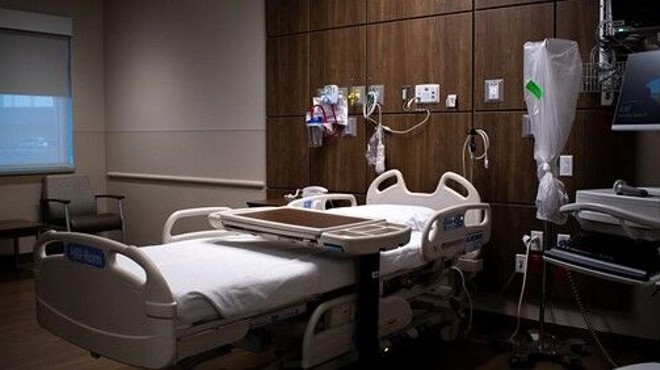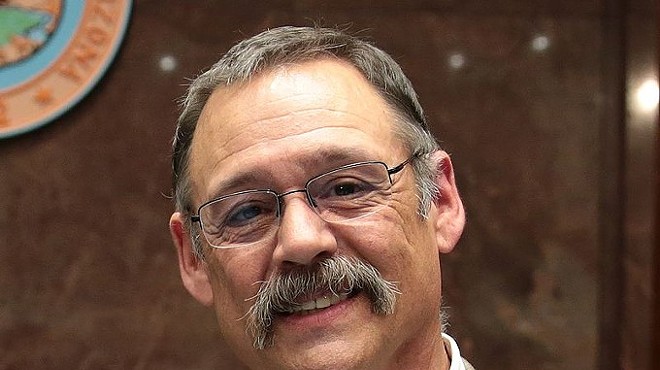Tuesday, August 18, 2020
Pima County Health Department: Schools Remain Unsafe To Open
As Gov. Doug Ducey celebrates a significant decrease in COVID-19 cases across the state, the Pima County Health Department has interpreted the data more conservatively and is cautioning local school districts against bringing students back to campus.
According to the county's nine metrics based on local public health data, the current COVID-19 situation is too dangerous for schools to reopen for in-person classroom instruction.
Pima County Administrator Chuck Huckelberry said that when progress is made in all nine metrics, schools should be allowed to operate in a hybrid fashion with some in-person instruction combined with online learning, according to his Aug. 17 memo to the Board of Supervisors.
“The key concern for students, parents, teachers, administrators and all support personnel is when it is safe for schools to begin to transition and ultimately return to face-to-face classroom instruction,” Huckelberry wrote. “The scientifically based criteria offered by the State of Arizona and Pima County have been aligned to avoid any possible contradiction or confusion.”
The metrics include a variety of data concerning disease spread, healthcare capacity and public health capacity. As of Aug. 10, some had reached the “progress” state, but none have been fully met:
1. The county health department wants to see “decreasing cases over two consecutive weeks.” The number of new cases this week is currently lower than the number of cases last week, so the department designated progress made in this metric.
2. The health department wants to see “decreasing deaths over 14 days.” This data is delayed by four weeks, so as of Aug. 9 the data from June 21 through July 4 showed the death rate at a plateau. The department designated that this metric was not met.
3. The health department wants to see less than two new hospitalizations per 100,000 residents across a three-day average. As of Aug. 9, this metric was not met.
4. The health department wants to see a “sustained number of completed tests for 14 days.” Currently, the number of new tests being completed is beginning to increase after a seven-day period, so the department designated progress made in this metric.
6. The health department wants to see sufficient PPE for emergency responders. They designated progress being made in this metric as well, as requests for PPE decreased by 50 percent from the highest request volume.
7. The health department wants to see timely COVID-19 case investigations, which would mean 80 percent of COVID-19 positive individuals received a contact tracing interview within 48 hours of their positive test result notification. Right now, this metric is not met since less than 50 percent of individuals have been interviewed within 48 hours. The county expects this metric to improve in the next few weeks, as their extensive contact tracing operations begin to pay off.
8. Similarly, the health department wants to see testing of symptomatic contacts of COVID-19 positive individuals within 48 hours. Right now, this criteria is not met but the county expects that to change in the coming weeks.
9. The health department wants to see a support system for COVID-19 patients who can’t be discharged home because they are homeless or have other unique circumstances. They designated progress being made in this metric, with some procedures in place for transferring these individuals into congregate living or long-term care facilities.
The committee will determine the appropriate timing for face-to-face classroom instruction based on ADHS guidance, the current Pima County COVID-19 Progress Report and the latest scientific information available, according to Huckelberry's memo.
The county health department also recommended the committee develop a “written, worksite-specific COVID-19 prevention plan for every school district or facility.” This plan will include a “comprehensive risk assessment” of all work areas in all districts. The department is already working to develop a guidance document that will assist schools with their individual prevention plans.
The department strongly encourages school districts to designate a person or team at each school site to implement the plan and relay important information to students and staff quickly.
The department also hopes to establish a School Liaison team to lead two or three weekly webinars for schools and districts to communicate current health guidance and updates.
Since the beginning of August, the Pima County Health Department has provided local school districts with personal protective equipment such as cloth masks, three-ply masks, gloves, hand sanitizer and face shields paid for by federal CARES Act dollars.
“The Pima County Health Department has been researching what other states and localities are doing across the country, and has developed a list of public health principles of decision making for schools regarding re-opening, operating and closing during this pandemic,” said Pima County Superintendent Dustin Williams and Public Health Director Dr. Theresa Cullen in a memo. “The PCHD is using these principles to inform our guidance to schools regarding not only the timing of re-opening, but also the development of prevention plans for each school or school district.”
Those public health principles for reopening schools include:
1. All decisions must provide equitable outcomes for all students, staff, and faculty regardless of race, color, religion, sex, national origin, age, disability, veteran status, sexual orientation, gender identity, or their need to refrain from in-person activities due to concerns about COVID-19.
2. All decisions for returning safely to in-person instruction should be based on state and local public health guidance.
3. All decision-making must integrate emerging scientific-based evidence.
4. The reopening plan must have the ability to ensure appropriate isolation of symptomatic students and staff and have protocols in place for transportation to a safe location for quarantine or isolation.
5. The reopening plan must have protection for individuals in the community and their family members who are vulnerable to severe COVID-19 disease or to harassment or discrimination.
6. All decisions must consider the harmful effects of school closure (social-emotional effects of quarantine/isolation; widening disparity in educational attainment; reduced access to meals; increase in substance misuse, domestic violence, anxiety/depression).
For more information, visit the county’s Back to School webpage.
Tags: COVID-19 , Coronavirus , Pima County Health Department , Back to School , School Reopening , Image

















